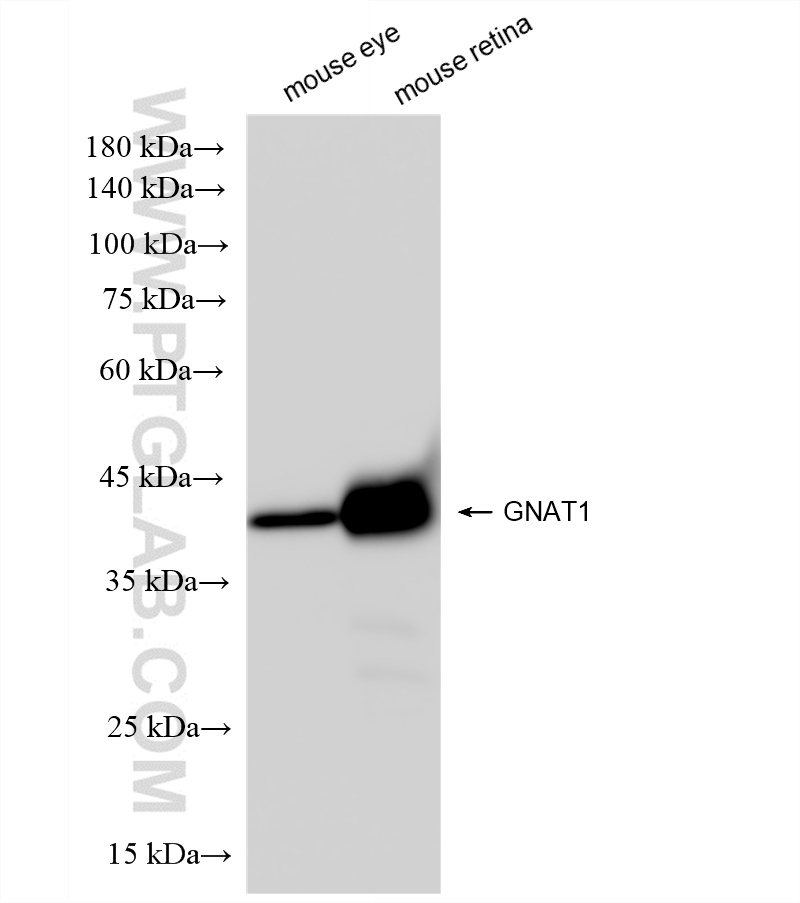验证数据展示
经过测试的应用
| Positive WB detected in | mouse eye tissue, mouse retina tissue |
推荐稀释比
| 应用 | 推荐稀释比 |
|---|---|
| Western Blot (WB) | WB : 1:5000-1:50000 |
| It is recommended that this reagent should be titrated in each testing system to obtain optimal results. | |
| Sample-dependent, Check data in validation data gallery. | |
产品信息
85362-1-RR targets GNAT1 in WB, ELISA applications and shows reactivity with human, mouse samples.
| 经测试应用 | WB, ELISA Application Description |
| 经测试反应性 | human, mouse |
| 免疫原 |
Peptide 种属同源性预测 |
| 宿主/亚型 | Rabbit / IgG |
| 抗体类别 | Recombinant |
| 产品类型 | Antibody |
| 全称 | guanine nucleotide binding protein (G protein), alpha transducing activity polypeptide 1 |
| 别名 | Transducin alpha 1 chain, Guanine nucleotide-binding protein G(t) subunit alpha-1, GNATR, GBT1, CSNBAD3 |
| 计算分子量 | 40 kDa |
| 观测分子量 | 40 kDa |
| GenBank蛋白编号 | NM_000172 |
| 基因名称 | GNAT1 |
| Gene ID (NCBI) | 2779 |
| 偶联类型 | Unconjugated |
| 形式 | Liquid |
| 纯化方式 | Protein A purification |
| UNIPROT ID | P11488 |
| 储存缓冲液 | PBS with 0.02% sodium azide and 50% glycerol, pH 7.3. |
| 储存条件 | Store at -20°C. Stable for one year after shipment. Aliquoting is unnecessary for -20oC storage. |
背景介绍
GNAT1, also named as GNATR, belongs to the G-alpha family and G(i/o/t/z) subfamily. Guanine nucleotide-binding proteins (G proteins) are involved as modulators or transducers in various transmembrane signaling systems. Transducin is an amplifier and one of the transducers of a visual impulse that performs the coupling between rhodopsin and cGMP-phosphodiesterase. Defects in GNAT1 are the cause of congenital stationary night blindness autosomal dominant type 3 (CSNBAD3). This antibody is specific to GNAT1.
实验方案
| Product Specific Protocols | |
|---|---|
| WB protocol for GNAT1 antibody 85362-1-RR | Download protocol |
| Standard Protocols | |
|---|---|
| Click here to view our Standard Protocols |


